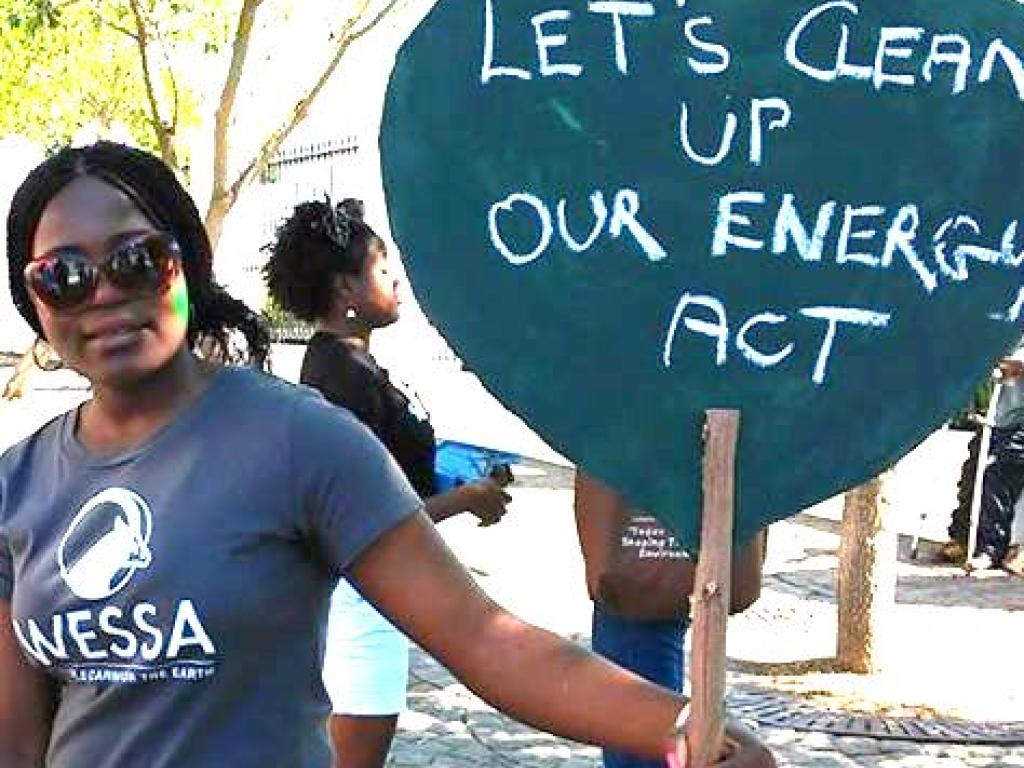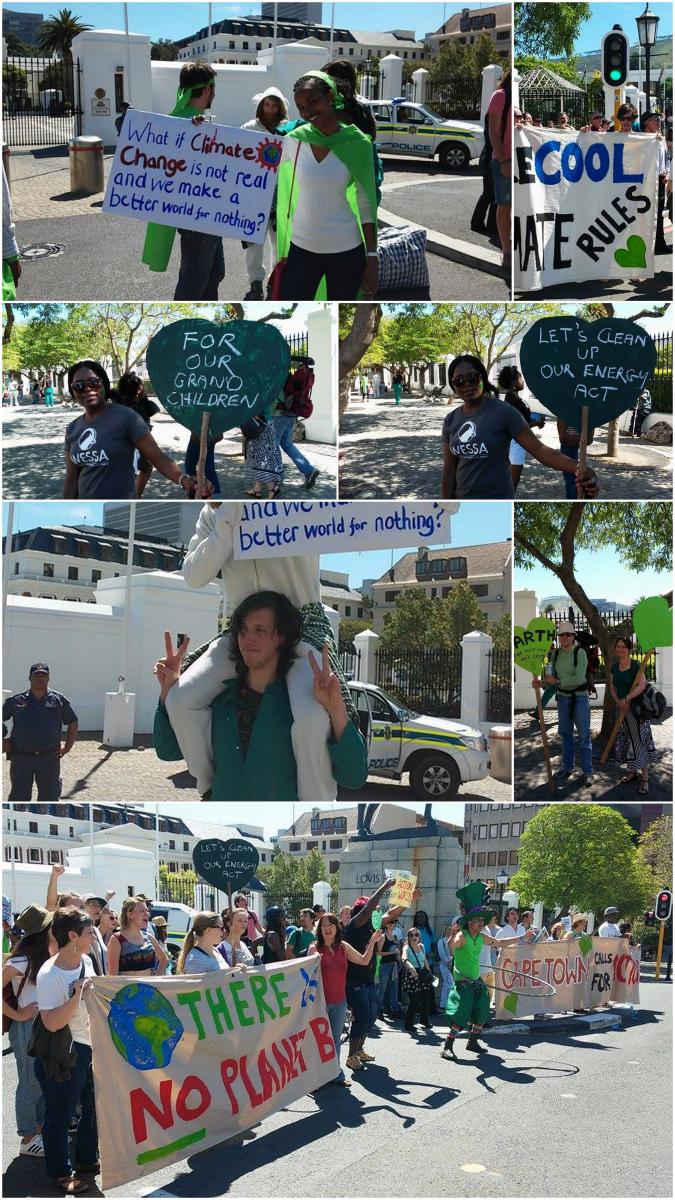We want climate change! The People’s Climate March in Cape Town

By Katrine Claassens
On the 21st of September, 2014, the largest ever demonstration against climate change took place. The People's Climate March, organized by the activist organizations 350.org and AVAAZ was attended by 300,000 people (or 400,000 depending on where you get your numbers) in New York two days before the U.N.âs Climate Summit. In solidarity with the New York march, other marches were held all over the world with a global total of about 600 000 citizens concerned about climate change participating. South Africa also partook with the countryâs biggest march in Johannesburg.
Cape Town had a march too. I bought a few metres of green cloth for capes and bandanas, googled a few catchy climate change slogans for placards and joined in with some friends and colleagues from the Environmental and Geographical Science Department.
Cape Townâs march was a haphazard affair organized on Facebook: dates, times and venues changed a few times and there was confusion as to city laws on marching. Eventually, a âgatheringâ rather than a march was organized to be at the Oranjezicht City Farm (OZCF) with a dismal attendance of less than 200. There are surely more people in Cape Town that care about climate change and would agree with 350.org when they say that climate change that will âtake everyone to change everything,â so where were they that Sunday? Capetonians are notoriously laid-back and prone to late Sunday brunches, but was the ill-attendance due to something more than that?
Since our small group got a little carried away trying to make our posters attractive we arrived late to find that the gathering had turned into a march, and joined the small crowd as they walked down Orange Street behind a banner that proclaimed âTHERE IS NO PLANET Bâ. The march came to a standstill in front of parliament where a ripple of excitement went through the crowd when the police arrived. âWhoâs your leader?â they asked. âWe donât have one,â a dreadlocked man who was painted green and walking on stilts replied. A rumor went around that without a leader to confront they couldnât do anything. Either way they didnât seem to be in any hurry to clear off any demonstrators. Pleased with the police presence, which seemed to somehow add the legitimacy and seriousness to the march, people took selfies, careful to get the law enforcement officers in the background.

It was a Sunday, with road closures because of a marathon happening on the same day, and there was not much traffic outside parliament. A few cars hooted as they passed and the group began to lose steam and run out of rallying cries. At some stage people started chanting âwe want climate change!â before trailing off into confused silence. After about 45 minutes the group started dissipating.
A total of four people attended from our department, a place full of people who I know care deeply about climate change and are dedicated to solving the problem. After asking around, I found an interesting mix of reasons that I think give some insight into my original question about where everyone was.
Firstly, despite the good intentions of the Facebook co-ordinators, the event was not well publicised: most people simply didnât know that it was happening. There were a number of people who intended to come but had trouble with transport, a babysitter who didnât pitch or an offer of last minute tickets to a favourite band. One student who wanted to come stayed behind to work on his thesis, which was on climate change, saying that surely he was making a bigger contribution by completing his research. Another cancelled on principle, citing personal objections to the values of the OZCF. Of those who did come, an international student our group, though perfectly legally in the country, ditched her âRwanda Against Climate Changeâ placard when she (understandably) felt uncomfortable with the police presence. Subsequently I found out that the police had in fact said their presence was to "guard" us.
Practical concerns, tempting opportunities, conflicting ideologies and how informed, or connected, people were to social media are all valid and understandable reasons for the low turn-out. And we have to ask whether a bigger turnout would have made a difference anyway?
Reports and newspaper articles written in weeks subsequent to the New York march hailed it as a success. Looking back a few months later it is hard to see if it did have any lasting effects or influence on climate change policy. However, there is no doubt that it was a meaningful and powerful experience for those that participated, and was a valuable demonstration of levels of awareness and support for the movement against climate change.
Could the Cape Town march be considered a success? Was it, as one of the organisers, Patrick Dowling of WESSA (Wildlife and Environment Society of South Africa), put it, "an important pixel in a really big picture"? It was good to see the new brand of environmental activists, ones that are more main-stream, out and about and diversity in the group. But the event was haunted by the all-too-common absence of leadership and lack of mass grassroots mobilizations that plague climate change action. This kind of mobilization on large, or small, scales is not futile, but still left us with a sense of ambivalence perfectly summed up in a post on the Cape Town marchâs Facebook page:
